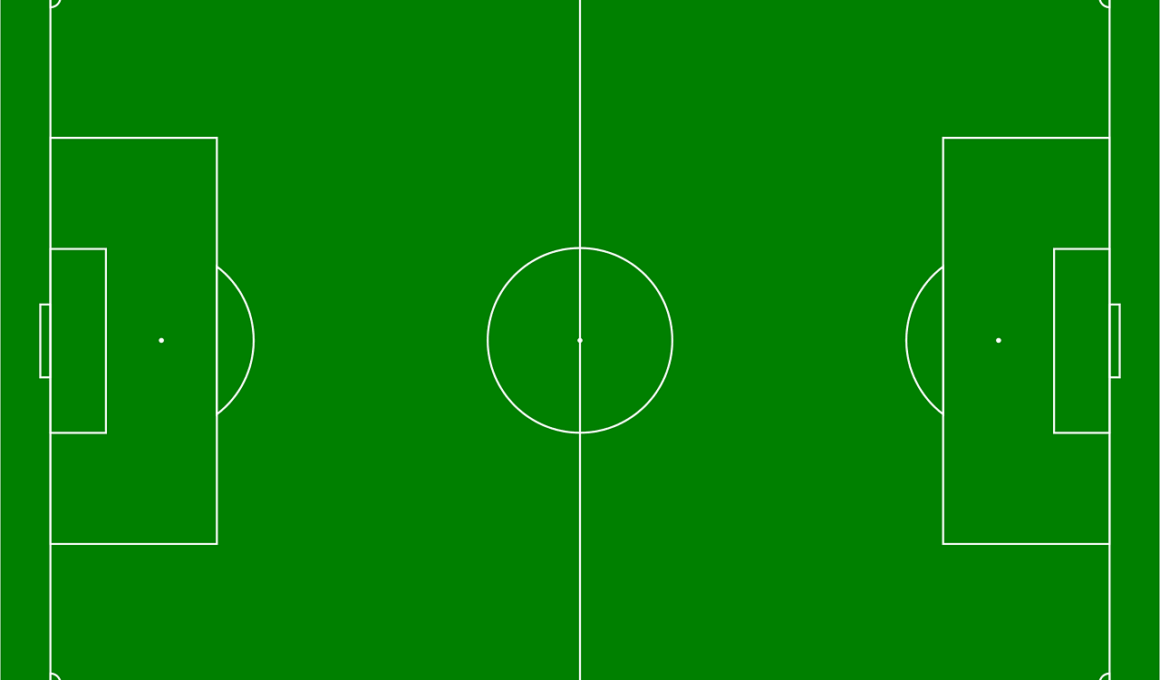Plyometric Training for Soccer: Enhancing Speed and Agility on the Field
Plyometric training is an exceptional method to enhance performance for soccer players by developing speed and agility. This explosive training focuses on dynamic movements which significantly improve fast-twitch muscle fibers, allowing athletes to react quickly and change directions effectively on the field. Moreover, the incorporation of these exercises into a daily training regime cultivates better control, when dribbling or sprinting. Key plyometric exercises include box jumps, bounds, single-leg hops, and lateral jumps. These drills drastically improve muscle strength, stability and coordination. To maximize benefits, athletes should incorporate plyometric training two to three times per week into their routine. It is crucial to ensure adequate recovery between sessions to optimize performance and reduce injury risk. Coaches should consider the specific demands of soccer when designing these programs. Proper technique during plyometric exercises is essential in preventing injuries and facilitating effective training gains. Furthermore, proper warm-ups and stretching routines before beginning any intense training session will prepare the muscles and joints for explosive movements. Consistent plyometric training yields significant results, making it a fundamental aspect of soccer training programs.
Benefits of Plyometric Training for Soccer Players
The benefits of plyometric training for soccer players are profound and impactful. Engaging in explosive exercises not only improves overall fitness levels but also enhances key physical attributes necessary for the game. These include speed, strength, and agility. Plyometric drills stimulate neuromuscular adaptations that improve coordination and movement economy. In turn, they enable players to perform more complex soccer maneuvers with greater precision. Enhanced muscular power and force generation result in stronger shots, longer throws, and quicker sprints down the field. Moreover, following a consistent plyometric routine can help athletes improve endurance levels during matches. By enabling quicker recovery after high-intensity actions, these exercises sustain high performance throughout the game. Injury prevention is another essential benefit. Stronger muscles, ligaments, and tendons reduce the likelihood of common soccer injuries. Additionally, athletes develop better proprioception, which assists in maintaining balance. By incorporating various programming styles, players can adapt their training to suit their specific positions and styles of play. Ultimately, contributing to an athlete’s holistic development promotes success both on and off the field.
Essential Plyometric Exercises for Soccer
Incorporating a variety of essential plyometric exercises into soccer training can significantly enhance athletic agility and explosiveness. Here is a list of some key exercises you can integrate into your training routine:
- Box Jumps: Jumping onto a raised surface strengthens leg muscles effectively.
- Depth Jumps: Helps improve reactive strength and power generation.
- Lateral Bounds: Focuses on developing side-to-side movement, key while defending.
- Single-Leg Hops: Targets individual leg strength and stability.
- Burpees: A full-body workout that combines strength and cardio, beneficial for repeat sprint ability.
- Broad Jumps: Engages multiple muscle groups for distance and acceleration improvement.
- Medicine Ball Throws: Incorporates upper body power essential for goalkeepers and strong kicks.
Incorporating these exercises into practice sessions or training programs enhances skill sets required for soccer. Furthermore, increasing intensity and complexity of these exercises progressively challenges players and encourages continuous improvement.
It is important to highlight that plyometric training should be individually tailored depending on each player’s experience and fitness level. Beginners may focus on fundamental techniques and basic drills to establish a strong foundation. Progression towards more intensive exercises should follow a structured plan based on their development. Regular assessment and adaptation of their training regimen are critical in maintaining motivation and preventing burnout. Effective plyometric programs stimulate greater athletic performance while keeping players engaged and challenged. Athletes should emphasize proper posture and body alignment during these exercises to gain maximum benefits. This ensures the correct mechanics are used and minimizes the risk of injury. Coaches and trainers play a pivotal role in guiding athletes through their plyometric training, ensuring they understand the fundamental aspects of each movement. As athletes become more proficient, they should gradually incorporate more complex drills that combine agility and plyometric movements. This transition will better mimic actual gameplay scenarios, translating their training into improved performance on the field. Therefore, a customized approach to programming initiatives will drive positive outcomes across varied levels of soccer players.
To further optimize plyometric training benefits, integrating strength training is pivotal. Developing a comprehensive strength and conditioning plan including resistance training maximizes the explosiveness gained through plyometrics. This blend of training strategies allows for improved overall performance in soccer. Enhancing muscle strength through weight training will lead to better power output during plyometric exercises. Both training methods complement one another when structured appropriately in a well-planned program. This integrated approach promotes muscle balance, reducing undue stress on the joints and stemming injuries. Furthermore, mental readiness is essential when approaching plyometric training sessions. Athletes should mentally prepare for high-impact movements to effectively execute them. Visualization techniques can assist in reinforcing their mental focus and confidence. Additionally, including agility drills before sessions ensures muscles are primed for explosive efforts. Players must remember the importance of hydration during intense training; staying hydrated fosters optimal athletic performance and recovery. Finally, regular feedback from coaches or performance trainers will help players identify areas for growth and development. This insight inspires commitment to and enjoyment of plyometric training, promoting long-term athletic success.
Avoiding Common Mistakes in Plyometric Training
While plyometric training offers exceptional benefits, athletes must avoid common mistakes to ensure safety and optimize effectiveness. One significant error occurs when players neglect the importance of proper warm-ups. Starting intense plyometric workouts without adequate preparation increases the risk of injury. Therefore, a thorough warm-up should include dynamic stretches and bodyweight movements to prepare the muscles. Additionally, performing exercises with incorrect form can lead to injuries or suboptimal results. Athletes must prioritize technique over quantity and ensure they perform each movement correctly. Striving for quality will yield superior training outcomes. Another mistake often observed is insufficient recovery time between intense sessions. Players need adequate rest to allow muscles to repair and adapt. It is essential for athletes to listen to their bodies, reducing intensity when necessary and managing fatigue. Ignoring these signals can contribute to overuse injuries. Another common pitfall includes a lack of variety in exercises. Employing a diverse range of drills and adjustments prevents plateaus and enhances motivation. Incorporating different plyometric elements encourages continuous improvement while keeping training sessions exciting.
In conclusion, plyometric training serves as a fundamental component for soccer players aspiring to improve their agility and speed on the field. The results from consistent implementation of tailored plyometric programs are substantial. Athletes can expect improved muscular power, enhanced coordination, and reduced risk of injury alongside an increase in performance capabilities. Fostering a balance by combining plyometric training with strength and agility work enhances overall athletic development. Developing efficient movement patterns through proper technique during exercises, and focusing on recovery strategies, ensures players stay healthy throughout the training program. Soccer demands quick footwork, sharp changes in direction, and high-speed performance, all of which can be enhanced through focused plyometric training. Coaches, athletes, and fitness trainers should work collaboratively to design and implement programs tailored to individual needs and player positions. For optimal performance gains, it is pivotal to continuously assess, tweak, and improve the training regimen based on feedback and observable progress. Ultimately, the integration of plyometric training into regular practice will lead to athletes reaching their full potential on the soccer field.
Summary of Key Takeaways
Plyometric training delivers significant advantages for soccer players aiming to boost speed and agility. This style of training enhances power, quickness, and overall athleticism through controlled explosive movements. Incorporating various workouts into a structured program ensures an athlete develops essential skills like explosive jumps, lateral movements, and overall strength. Regular inclusion of plyometric exercises two to three times weekly, paired with adequate recovery time, maximizes performance and minimizes injury risks. Key exercises such as box jumps, depth jumps, and single-leg hops contribute to enhancing functional fitness. Coaches play an integral role in ensuring athletes keep proper form to optimize benefits and avoid injury risks. Moreover, pairing plyometrics with strength training further elevates performance. In addition, proper warm-ups, a variety of exercises, and focused recovery contribute to safer and more effective training outcomes. Making safety a priority while continuously keeping athletes engaged with diverse drills enhances results substantially. Encouraging collaboration between athletes and coaches reinforces success, leading to ongoing improvements and heightened performance levels. Consequently, plyometric training is indispensable in the preparation and development of elite soccer players.


